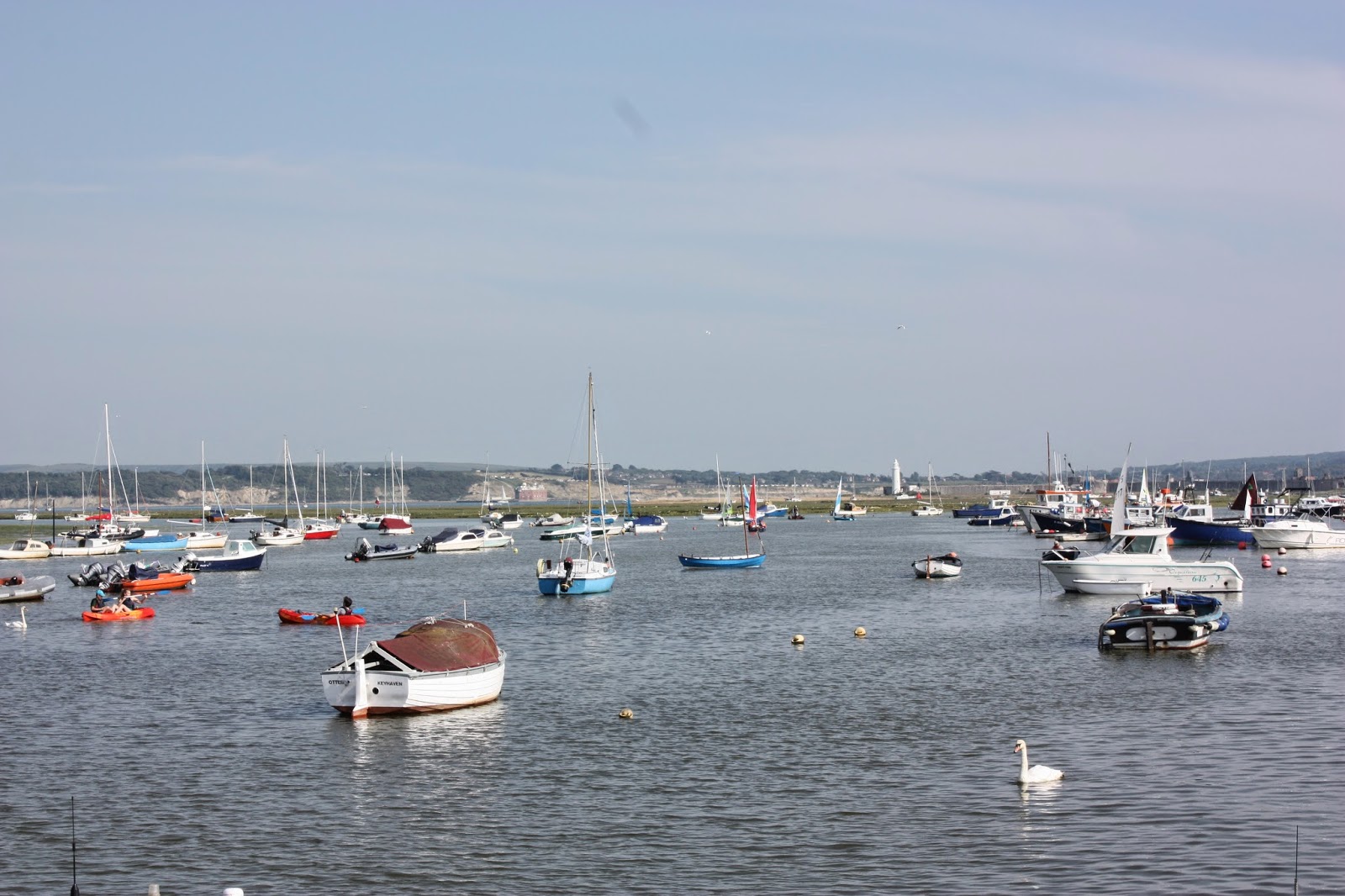Early on a warm June evening, we came down to the sea to walk.
In the harbour at Keyhaven, sailors in small boats were setting off for an hour on the sea before dusk.
Swans preened and fed on weed in almost-still water.
Beside the shore path, wild flowers flourished amid tangles of long grass.
Birds foot trefoil.......
......and tufted vetch.
The tide was low. Beyond the harbour, Hurst Castle stretched along its spit of land, out to the sea approach where English Channel meets the Solent. This narrow gap of sea between mainland and the Isle of Wight, is the way in for ships approaching Lymington, Southampton and the eastern Solent coast.
Hurst Castle was built by Henry VIII to defend the Solent ports from invading fleets. It has been extended and used as a defence through Napoleonic times and into the wars of the twentieth century.
Across the salt marsh and the blue sea, rise the wooded hills of the Island.
The small sea port of Yarmouth is on the left of the photograph. There is a car ferry service from Lymington to Yarmouth.
This short sea crossing is The Bar. Tennyson`s poem, Crossing the Bar, in memory of a friend,
was inspired by his regular crossing of this water on the way to his Island home at Freshwater.
As we walked eastwards along the raised shore path, we saw sea birds and waders, feeding in the mud and marsh. Without a long lens, they are almost hidden in muddy creeks and grasses.
Lapwing, shelduck and black headed gulls fed in wet mud. Pairs of oyster catchers whirred past us, calling......
Herring gull, still as a statue.
Behind the raised path are wide, shallow lakes where birds feed and make nests in reed beds or on shallow gravel scrapes.
Cygnet......
Canada geese, their goslings and an egret standing, heron-still in the water.
When we came to a special, hidden place, I looked for orchids that I have found there in other years.
The pyramidal orchid was there again. Two flowers on its stem. Resilient to storm and salt spray. A beautiful survivor.
Samphire grew through the sea wall......
....and a glaucous rose bloomed against the blue of sea and sky.
Turning back as the sun began to dip in the western sky, we were glad of the peace as this great digger slept on the bank. This stretch of coast was battered by the Valentine Night`s storm and work to repair and defend it goes on.
Sea campion
Wild carrot
Sparkling of the dipping sun on harbour waters. The tide was coming in.
Late bees still fed on a wild white rose.........
........beside calm sea, quiet boats and swans feeding by the old sea wall.
Welcome to new followers too!































































